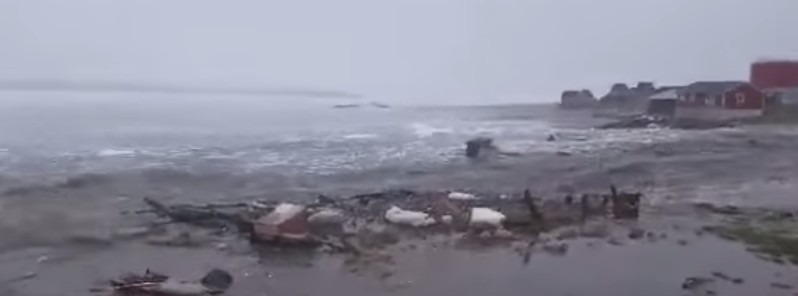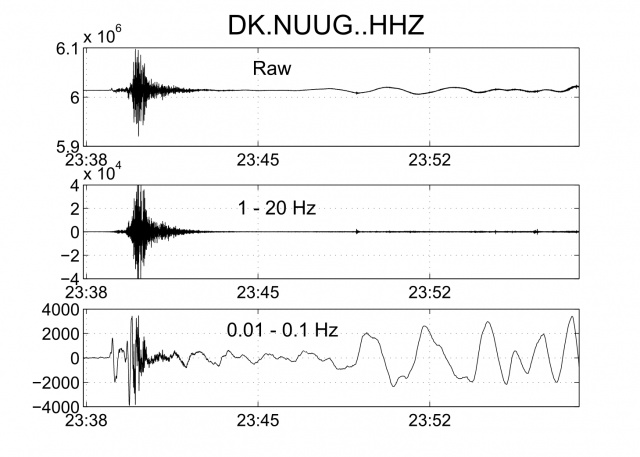Details emerge about Greenland tsunami, and a new video

New details have emerged about the Greenland landslide that occurred in Karrat Fjord and the deadly tsunami it produced late Saturday (local time), June 17, 2017.
The tsunami hit the village of Nuugaatsiaq just after 23:00 local time on June 17 (01:00 UTC on June 18), sweeping away 11 houses and leaving 4 people dead and 9 injured, 2 of them seriously.

It was initially thought that the tsunami was created by a magnitude 4.0 earthquake with the epicenter 28 km (17.4 miles) north of the village of Nuugaatsiaq on the western coast of Greenland. However, reconnaissance flights performed by the Danish Joint Arctic Command on June 18 discovered a large landslide scar (approximately 300 x 1 100 m / 985 x 3 600 feet), thus confirming that the cause of the tsunami was a landslide.
On June 19, Arctic Command sent additional aircraft to study the scar left by the landslide and found that another potentially unstable slope is located next to the failed mass. The discovery prompted the full evacuation of the village of Nuugaatsiaq, where 23 people initially decided not to leave, and both Illorsuit and Viaqornat.
According to Dr. Dave Petley of The Landslide Blog, Strasburg University's Clément Hibert, André Stumpf and Jean-Philippe Malet have downloaded the data from the local seismic station and concluded that the M4.0 signal was indeed generated by the landslide.


"The high-frequency seismic signal (1-20Hz) exhibits the ‘classical’ features of high-frequency signals generated by landslides (emergent onset, no phases, lots of energy in the high-frequency >1Hz). However the onset of the long-period signal (<0.1 Hz) is peculiar. The first phase, coherent and visible at other stations, is more characteristic of shear faulting. This might suggest a very fast destabilisation of the mass. This is my assumption and I think this should be more thoroughly investigated with inversion and modeling methods for example," Hibert said.
Featured image: Tsunami waves hit western Greenland after huge landslide – 01:00 UTC, June 18, 2017. Credit: KNR News Nutaarsiassat

so let me understand, a land slide slightly larger than the one in seaford almost at the same time, caused a significant tsunami while the british one made a large splash. the energy required to make a surf wave is very significant but a tsunami is quite another matter. Should not a tsunami hit France and swamped the beaches of normandy if small landslides cause this devastation. I fail to see the logic
It depends on the depth of the water, the height in which the landslide falls and how wide the impacted area is. Narrow fjords, shallow water and the height in which this landslide fell all contributed to the devastation. When you compare the Seaford landslide it didn’t directly impact water meaning that its kinetic energy was partially dispersed, the sea is shallow but the south coast is wide enough to disperse the energy over a much larger area and it didn’t fall as far as the Greenland landslide. Also a contributing factor is what the rock is made of, Seafords are mostly made up of chalk, which is brittle. With much of the western coast of Greenland being mostly bedrock, much heavier and less brittle.